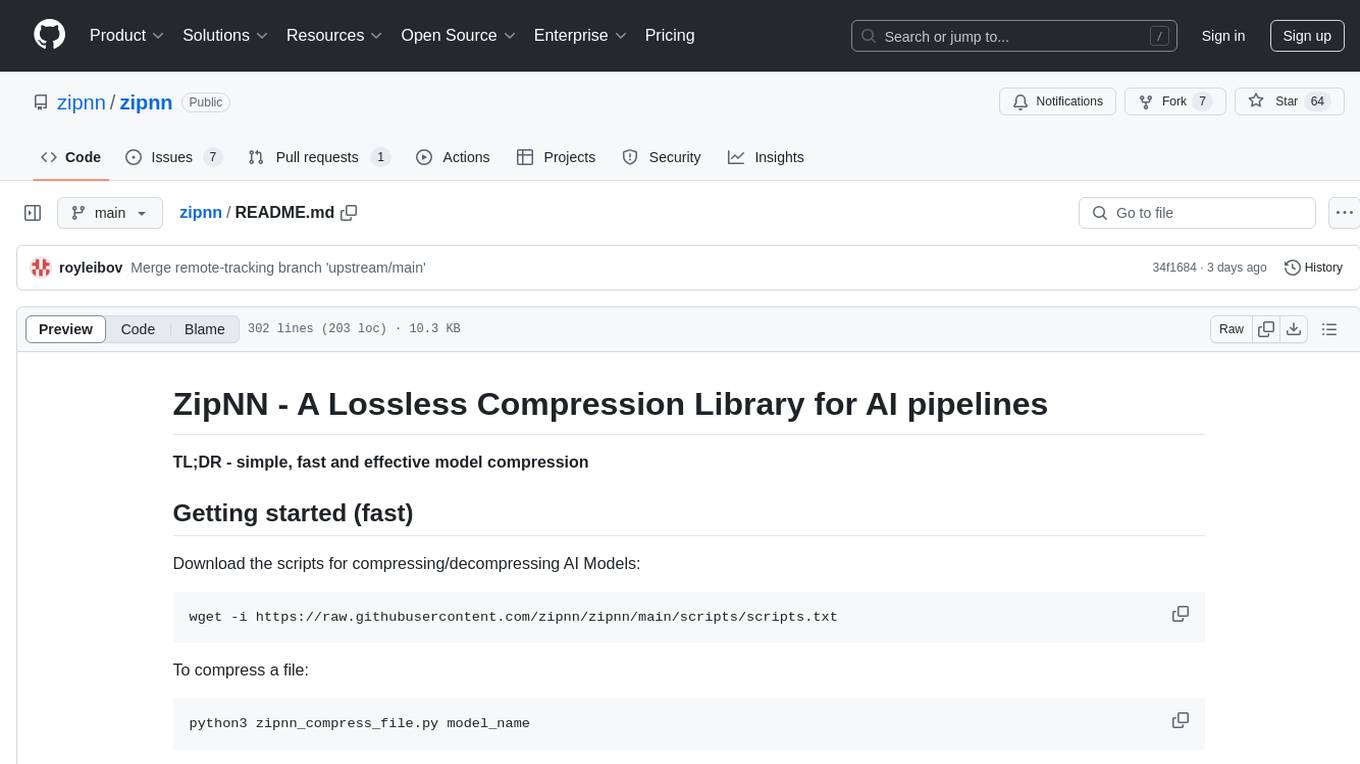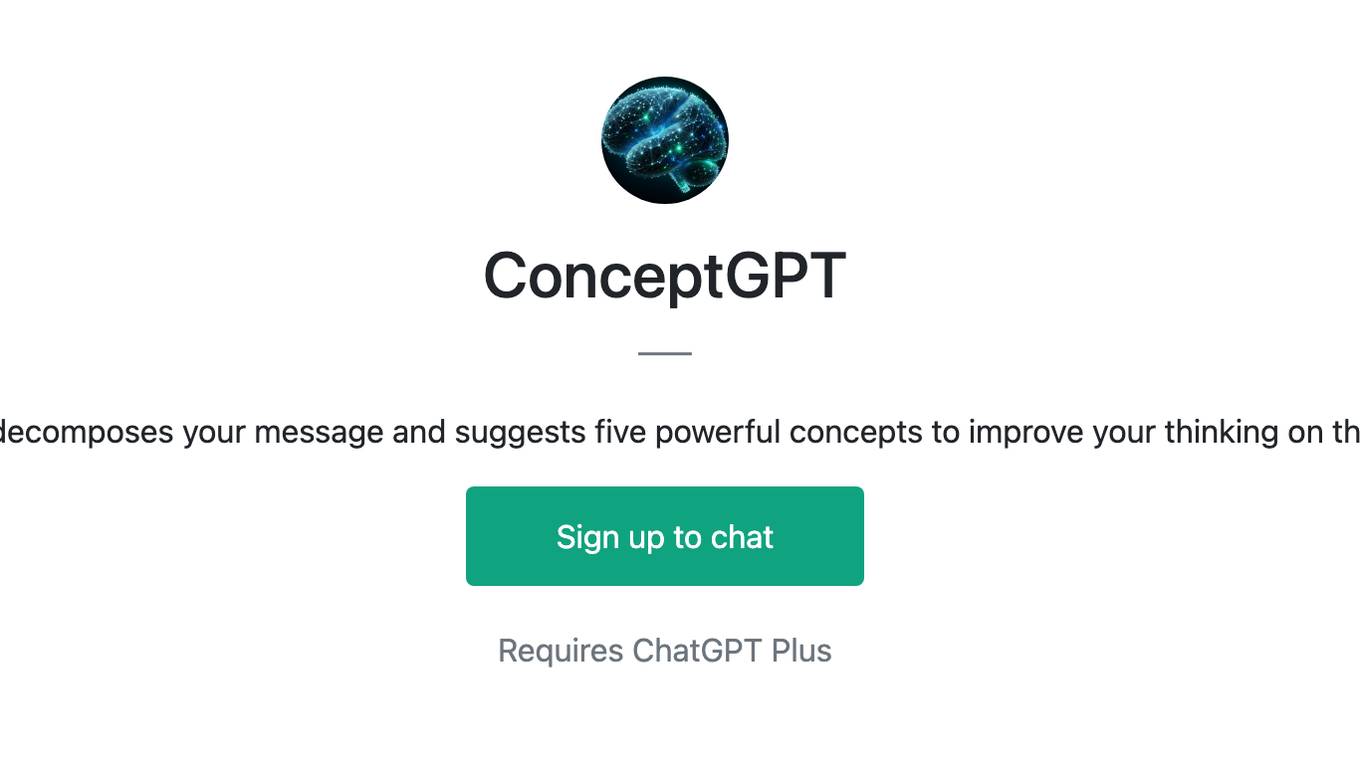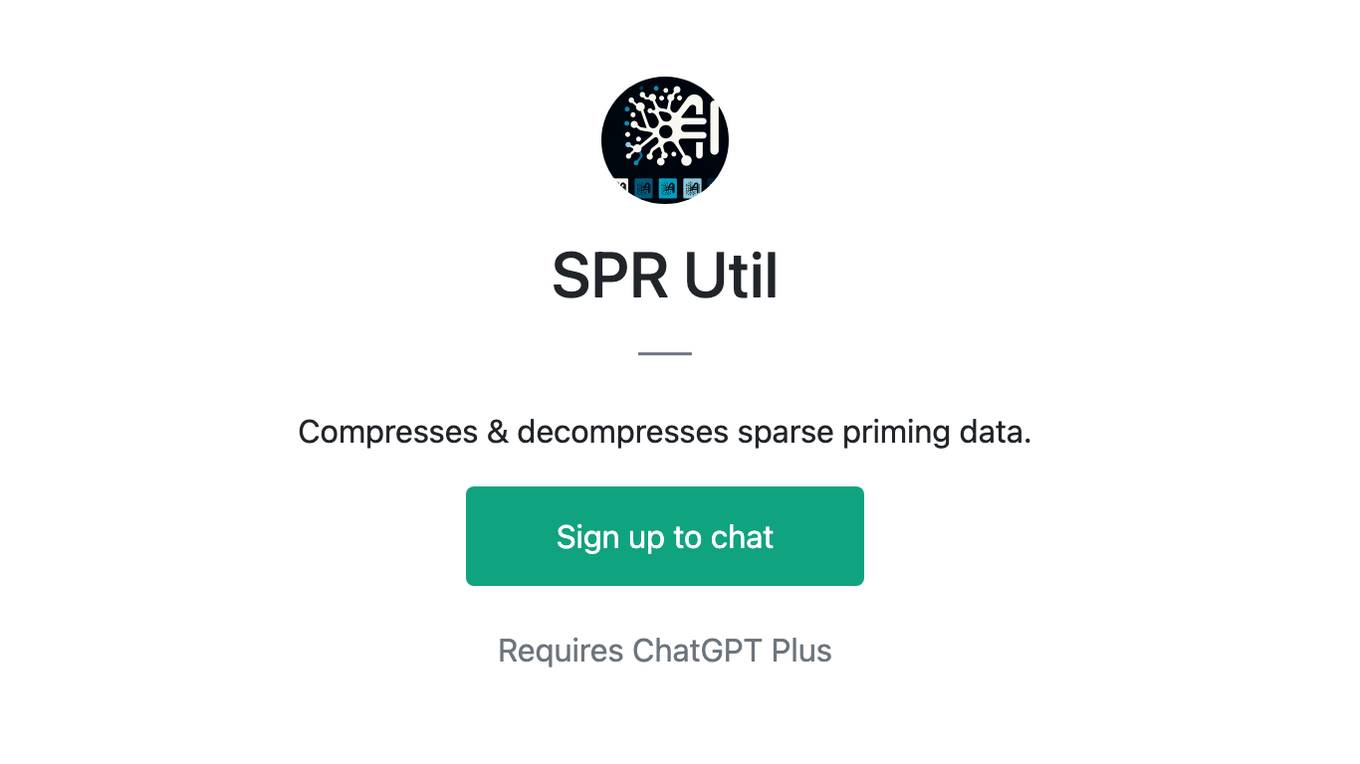Best AI tools for< Decompress Data >
0 - AI tool Sites
1 - Open Source AI Tools

zipnn
ZipNN is a lossless and near-lossless compression library optimized for numbers/tensors in the Foundation Models environment. It automatically prepares data for compression based on its type, allowing users to focus on core tasks without worrying about compression complexities. The library delivers effective compression techniques for different data types and structures, achieving high compression ratios and rates. ZipNN supports various compression methods like ZSTD, lz4, and snappy, and provides ready-made scripts for file compression/decompression. Users can also manually import the package to compress and decompress data. The library offers advanced configuration options for customization and validation tests for different input and compression types.
2 - OpenAI Gpts

ConceptGPT
This GPT decomposes your message and suggests five powerful concepts to improve your thinking on the matter
